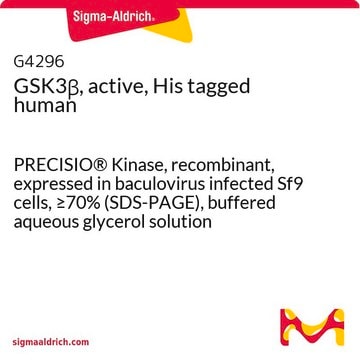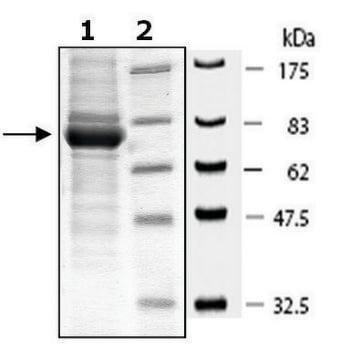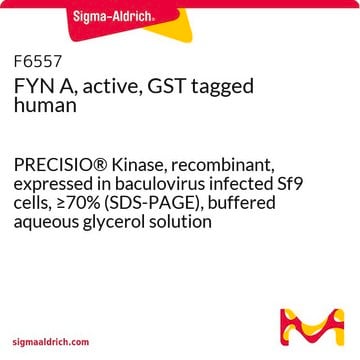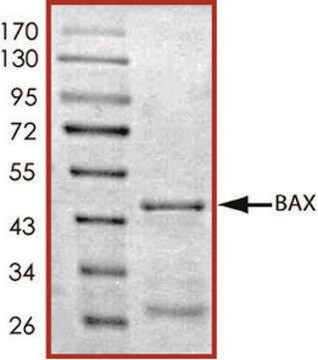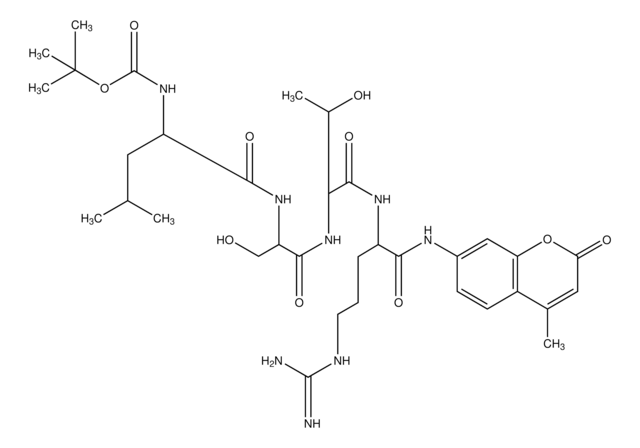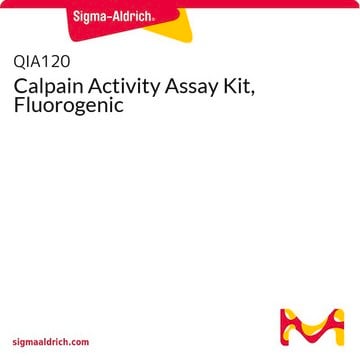SRP0356
GSK3β active human
recombinant, expressed in baculovirus infected Sf9 cells, ≥80% (SDS-PAGE)
Sinónimos:
glycogen synthase kinase 3 beta
About This Item
Productos recomendados
origen biológico
human
recombinante
expressed in baculovirus infected Sf9 cells
Análisis
≥80% (SDS-PAGE)
formulario
aqueous solution
actividad específica
≥500 pmol/min-μg
mol peso
73 kDa
envase
pkg of 10 μg
técnicas
activity assay: suitable
inhibition assay: suitable
Nº de acceso NCBI
Nº de acceso UniProt
Condiciones de envío
dry ice
temp. de almacenamiento
−70°C
Información sobre el gen
human ... GSK3B(2932)
Descripción general
Aplicación
Acciones bioquímicas o fisiológicas
Código de clase de almacenamiento
12 - Non Combustible Liquids
Clase de riesgo para el agua (WGK)
WGK 1
Punto de inflamabilidad (°F)
Not applicable
Punto de inflamabilidad (°C)
Not applicable
Certificados de análisis (COA)
Busque Certificados de análisis (COA) introduciendo el número de lote del producto. Los números de lote se encuentran en la etiqueta del producto después de las palabras «Lot» o «Batch»
¿Ya tiene este producto?
Encuentre la documentación para los productos que ha comprado recientemente en la Biblioteca de documentos.
Nuestro equipo de científicos tiene experiencia en todas las áreas de investigación: Ciencias de la vida, Ciencia de los materiales, Síntesis química, Cromatografía, Analítica y muchas otras.
Póngase en contacto con el Servicio técnico
